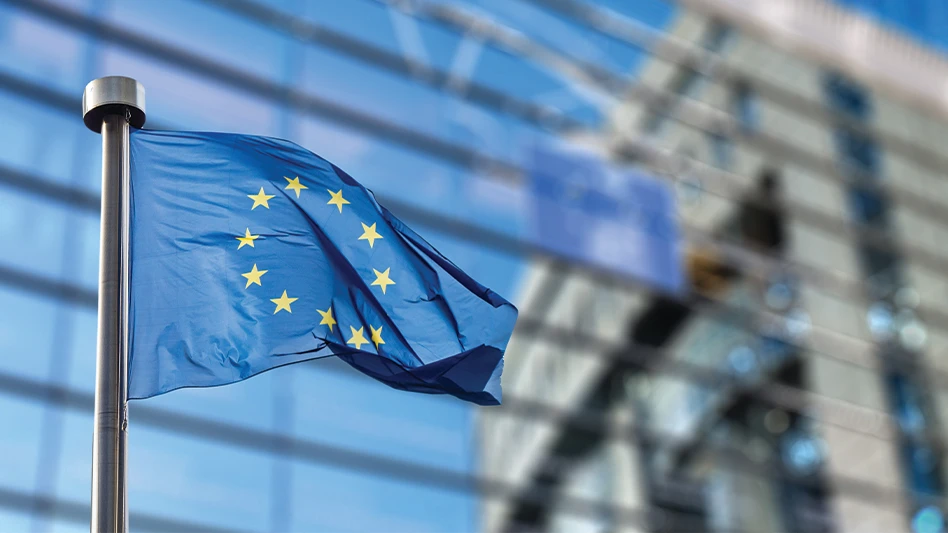
nordroden | stock.adobe.com
Greyparrot, a London-based technology developer for the waste and recycling sector, has released a report detailing 2024 recycling trends using data gathered by its Analyzer units. The units are deployed inside material recovery facilities (MRFs) and inspect material streams as they pass through systems on conveyor belts.
The company says data was supplied by 140 Analyzers deployed at 55 facilities across 20 countries in North America, Europe and Asia, and those units detected 40 billion objects this year. Notably, the company says its units detected 800 objects per second in 2023, and that number jumped to more than 1,200 objects per second this year.
Plastics recycling remains essential
Citing research by nonprofit EA Earth Action, Greyparrot says 220 million tons of plastic scrap were generated globally this year—a 7 percent increase over 2021, for example—and that while reduction and reuse strategies are the most effective way to prevent plastic waste at its source, recycling is the “final fork in the road” for the plastic produced each year. The company says it can either return to the circular economy or go to landfills, incinerators or the natural environment.
The company says its data reveals how much plastic global sorting facilities are processing and the opportunity available to make more progress.
RELATED: Greyparrot makes next-generation MRF material analyzer available | Commentary: Accurate material data is key to successful EPR bills
This year, Greyparrot Analyzers detected more than 6 billion polyethylene terephthalate (PET) bottles—the highest tonnage of a material category entering recycling facilities. However, the company reports that PET bottles did not crack the top three categories found on global residue lines, which include material that typically is not recycled.
“The comparison suggests that sorting facilities are recovering billions of plastic bottles every year, and curbing emissions in the process: recycled PET produces 79 percent less carbon than virgin material,” the company writes in its report. “That’s important news for packaging producers that need to maximize recyclability ahead of extended producer responsibility [EPR] and avoid plastics packaging taxes by using more rPET [recycled PET].”
Additionally, Greyparrot says its units tracked more than 35,000 tons of recyclable plastics that were not ultimately recycled and ended up on residue lines. Clear plastic containers such as thermoform packaging were the third most common object by mass that Analyzer units detected on residue lines, and the units also flagged more than 7 billion flexible film objects, which the company notes are historically difficult to sort.
Good news for metal, glass recycling
In 2023, Greyparrot says its data showed that recyclable metal was just 3 percent of the average residue line, which aligned with global recycling rates for metal that exceeds 73 percent in regions like Europe.
This year, the company says it detected even less metal (2.5 percent) in residue lines. In particular, Analyzers spotted more than 2 billion aluminum cans.
Greyparrot says glass was even less common, making up 1.03 percent of unrecycled material.
The company says the lack of glass and metal in global residue lines sends several messages:
- For sorting plants in the United Kingdom and United States, it suggests a key stream of income may be affected by potential deposit return schemes (DRS) and bottle bills, especially where widely-recovered PET bottles also are targeted. The company says that to offset that impact, more efficient sorting that maximizes yield for the remaining PET, glass and metal will be essential.
- For regulators, it highlights that DRS often targets materials that already are being recycled, and that regulation focused on materials like flexible films and virgin plastic production could be more impactful.
- For brands and packaging producers, it flags two packaging materials that are consistently and effectively recovered and recycled.
Opportunity for fiber
Greyparrot writes that scrap fiber such as paper and cardboard was the most common material on residue lines in 2024, making up 56 percent of the material sorting facilities sent to landfills and incinerators.
The company views this data as an emissions reduction and cost savings opportunity.
“For every ton of paper that facilities can avoid sending to landfill, they’ll save 1 ton of CO2 equivalent,” the company writes. “Not every facility will have the capacity to install new fiber lines, but this transformation is still valuable—especially as emissions trading schemes come into play in countries like the U.K.”
Greyparrot points out that incinerating fiber at waste-to-energy plants releases biogenic gas, which won’t be subject to emissions fees. It adds that sorting facilities that can certify the amount of fiber in the material they send to such plants could reduce gate fees that will increase as a result of emissions trading schemes and help create a cleaner source of energy from waste in the process.
“The amount of fiber that Analyzer units detected in global residue streams suggests that this could be a certification process that makes a significant impact on some facilities’ bottom lines,” the company writes.
Latest from Recycling Today
- STG selects SolarPanelRecycling.com as exclusive recycling partner
- Toyota receives $4.5M to support a circular domestic supply chain for EV batteries
- Republic Services opens Colorado hauling facility
- ABTC awarded $144M DOE grant
- Massachusetts awards $4 million in waste and recycling grants
- Study: Solid phase manufacturing transforms recovered aluminum into high-performance alloys without melting
- Tata Steel to supply equipment maker JCB
- Light House embarks on construction site plastic scrap recycling effort





